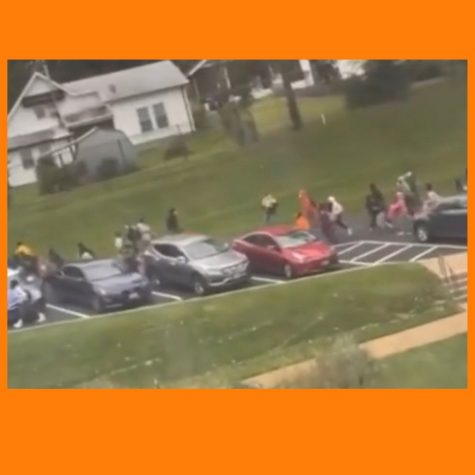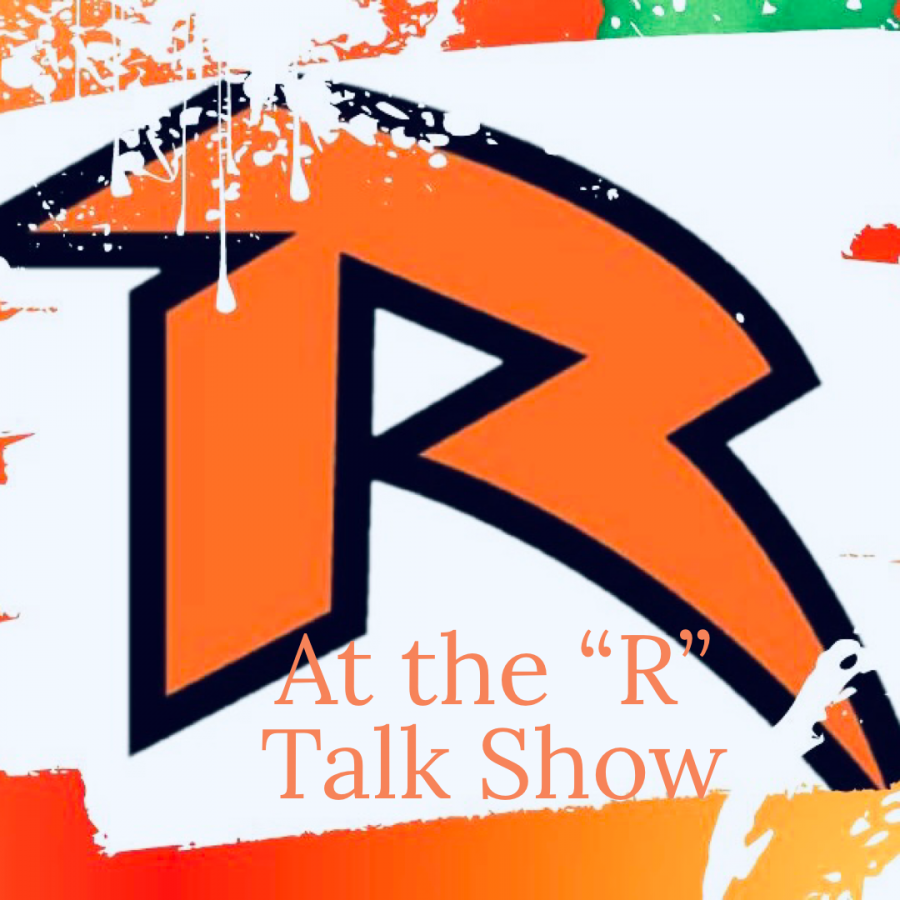Anatomy of a Hoax
October 28, 2021
The human brain is a complicated muscle.
It can rewire itself to strengthen mankind so that people can evolve as a whole. The brain will protect itself; it will make people forget about traumatizing things. The brain is what makes people human, and allowed them to create amazing things. The brain can also trick people into thinking things that are not necessarily true. When the brain has to process messaging on social media, events within a community, and news from around the country, it can have some serious repercussions, like what happened at Ritenour on October 25.
Social media and mental health
According to the Pew Research Center, 72% of Americans use at least one form of social media in their daily lives, and some teenagers average up to nine hours of use over the course of a day.
While social media usage definitely has its positive aspects, such as expanding the world and enhancing communication, it also comes with some serious side effects. Researchers from the University of Melbourne’s National Centre of Excellence in Youth Mental Health warned that social media can negatively affect people’s self-esteem, create social anxiety, depression, and warped sleep schedules.
Increased social media usage has also contributed to an increase in cyberbullying. Information from bullyingstatistics.org states that “over half of adolescents and teens have been bullied online, and about the same number have engaged in cyberbullying. More than 1 in 3 young people have experienced cyberthreats online. Over 25% of adolescents and teens have been bullied repeatedly through their cell phones or the Internet.”
Counselor Iliana Vayman says that the effects of cyberbullying can be especially harsh for teenagers.
“Mentally, physically, emotionally in every way Being cyberbullied is almost worse than being bullied in real life, because the bully has no fear behind a computer screen. Victims of cyberbullying manifest psychological and physiological effects such as anxiety, depression, low self-esteem, behavioral issues,” Vayman said. “It is a big deal, and kids don’t realize how hurtful and impactful their words are.”
Online Hoaxes
While people are spending more time on social media, they are also trying to learn how to navigate what is real and what is fake. While media literacy is increasingly being taught in schools, including in the Media Convergence pathway at Ritenour, people still fall victim to viral hoaxes and jokes.
“We start with Media Literacy skills in the Intro to Media course. We focus on cyber security, cyber bullying and harassment, being held accountable for statements made in emails or social media, and fake news or alternative facts,” Media Convergence teacher Jane Bannester said. “Common Sense Media says that US teens are 50/50 when polled on how they feel about being able to determine if a post is true or false news. I would suggest that RHS would find that to be true for its own students.”
According to a story in wired.com, Whitney Phillips, a professor at Syracuse University who studies misinformation and how it is amplified online, believes that hoaxes continue because of how people process information and come to conclusions about their beliefs.
“When confronted with new information, humans do not always do the logical thing and evaluate it on its own merits,” Phillips said. “Instead, we often make snap decisions based on how the information adheres with our existing worldviews.”
Social media has also become filled with dark humor. Dark humor has been around for a long time but it has gotten much more popular lately because of it being shared on social media. People sometimes use dark humor as a coping skill even though some may not find it funny. It is a human characteristic to try and find the light to a dark situation. As current students are in their third school year with COVID and live in a world with much more accessible bad news, dark humor can be seen more in student actions.
Trauma affects coming back to school, societal trauma
Students around the country have faced trauma coming back to school after being out of it for about a year and a half and at Ritenour high school it was no different, especially after a year.
As a society, people have community trauma, which is an event that impacts a few people but has structural and social consequences. An example of this in a school setting is school shootings.
“Trauma can be associated with students experiencing many different emotions and feelings and they can experience all these feelings/emotions simultaneously often each day,” Clinical Therapist Julie Diaz said. ” It can cause students to experience distorted automatic thinking patterns resulting in them being unsure about and/or awfulizing their futures.”
Due to social media, students are able to hear about these events much faster than before, and are able to see videos of students running for their lives. Students have trauma because of this and they might not even realize that anything could trigger them. Being on edge after seeing a threat like that can spark a trauma response that they may not have known that they had.
A viral hoax and mass panic
On October 25, students at RHS woke up to a post that indicated it was from a Ritenour student. The post stated that this person was getting cyberbullied and that no one was helping them so they said they were going to “shoot up the school”.
Some students alerted their teachers and administrators sprang into action to determine if this was a credible threat. Most students who committed deadly school attacks over the past decade were badly bullied, had a history of disciplinary trouble and their behavior concerned others but was never reported, according to a U.S. Secret Service study.
Administrators and police had determined that the threat was not real, and in fact many similar posts were put up that day with the names of other area schools. However, students were still on edge during the day. After hearing about shootings at schools like Parkland, Columbine, Sandy Hook, and as of lately Oxford, the threat still seemed very credible.
At lunch that day, a student popped a milk carton, and with the combination of the perceived social media threat and school shootings being in the minds of students, many students panicked. The loud bang triggered student’s fight, flight, or freeze in that very minute after hearing, seeing, and growing up around school shootings and being told since kindergarten how to react to a school shooter. Their brains were not thinking about school or homework or lunch. Their brains went into survival mode, and all they could think of was survival as many students ran out of the school.
“I was already anxious with the threat going around. I did not actually hear the milk pop. I just saw a bunch of kids running towards me. My first thought was to go into the big gym but it was closed and so I ran into the bathroom with my friend. We locked the bathroom door and there were a bunch of other girls freaking out. I was trying to stay calm and then I got a call from my friend who told me it was okay, she told me to come out to the pool hallway. My friend and I went that way and we went outside and found her mom’s car and then I went to (Athletic Director Drew) Lohnes’ office to calm down,” sophomore Julia Lohnes said.
Junior Charlie Holmes was another student who reacted to the students, rather than the actual milk carton, and started running.
“Well, I actually didn’t hear the milk carton. I just saw my peers running and heard a few screams. What was running through my mind was just to run with them. I didn’t want to take any chances and stay in case somebody was actually shooting,” junior Charlie Holmes said.
Psychological explanations for the event
What happened that day is what psychologists call Groupthink. Psychology Today calls it “a phenomenon that occurs when a group of well-intentioned people makes irrational or non-optimal decisions spurred by the urge to conform or the belief that dissent is impossible.”
Because of the students running out, the school was put on lock down, and soon after they allowed students to go home early.
As evidenced by Lohnes’ and Holmes’ responses, they did not actually hear the trigger that alerted students that something might be happening, but saw the mass panic and tried to take care of themselves in that situation.
The dark humor involved in a student making a decision to make a loud noise on a day that started with anxiety through a social media post caused a mass panic. While there was never any actual danger that day, the combination of social media usage, community trauma, and instinctual responses led to unnecessary panic.
“I think I reacted that way because of my mindset where if something bad happens I need to hide. I go into hiding mode and try to escape that bad moment,” Lohnes said.

Additional Story from St. Louis Post Dispatch.


